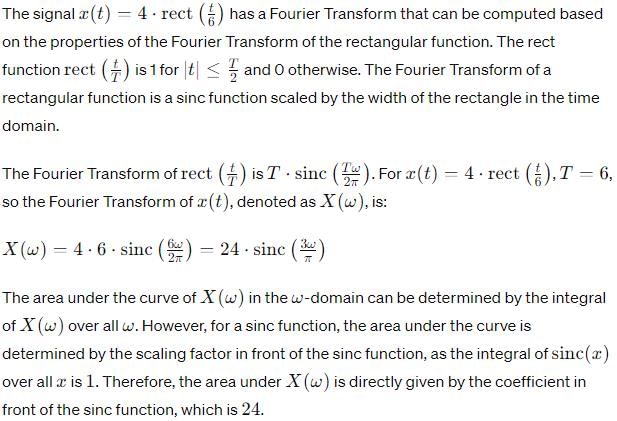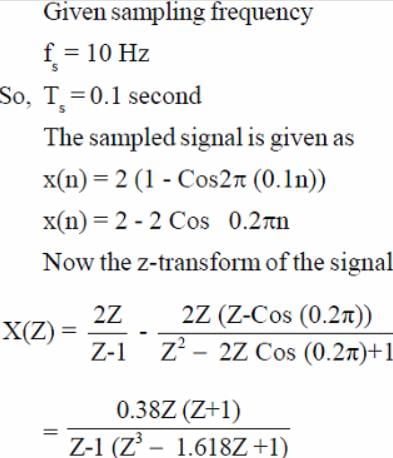Test: Signal & Systems- 3 - Electrical Engineering (EE) MCQ
25 Questions MCQ Test - Test: Signal & Systems- 3
The input and output relationship of a system is described as y(t) = ax + b, this system is linear
Which of the following signal is an example of an anti causal signal
Consider a signal x(t) = 4 rect (t/6) and its Fourier - transform is x(ω). Determine the area under the curve in the ω-domain.
If the Fourier transform of x(t) is x(ω), then determine the Fourier transform of x(at-b)
A pole zero pattern of a certain filter is shown in the figure. The filter must be
Determine the laplace-transform of signal x(t) shown in figure
Determine the bandwidth of the signal x(t) = e-at u(t), so that it contains 90% of its total energy.
Determine the output y(t) for an input x(t) = e-2t u(t), if the step response of the system is t u(t).
Simplify the following expression:
δ(-t) * u(t) * e-t/2 u(t)
Consider the analog signal x(t) = 3 Cos 100πt. This signal is sampled with a frequency of 75 samples per second and at the reconstruction side an ideal LPF having cut-off frequency is 30Hz is used. Determine the frequency component at the output of filter.
The input and output relationship of a system is given as,
A signal x(t) = 2 (1 - Cos2πt) is sampled with a sampling frequency of 10 Hz. Determine the z-transform of sampled signal.
If a signal f(t) has energy E, the energy of the signal f(2t) is equal to
The correlation between two signals x1(t) and x2(t) is 6. If average power of x1(t) is 10 and x2(t) is 8.
Then determine the power of x1(t) + x2(t)
S1 : δ(n) is an energy signal having energy is 1.
S2 : u(n) is a power signal having power is 1/2.
Which of the above is/are correct?
The input and output relationship of a system is given as,
The system is :
Determine the impulse response of the inverse system, if the impulse response of the system is u(n).
















